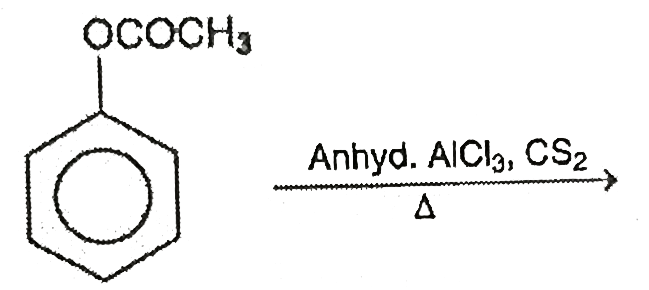Write the product (s) formed when Chlorobenzene undergoes nitration reaction.
To determine the products formed when chlorobenzene undergoes nitration, we can follow these steps:
Step 1: Understand the Reactants
Chlorobenzene (C6H5Cl) is an aromatic compound that contains a chlorine atom attached to a benzene ring. The nitration reaction involves the introduction of a nitro group (NO2) into the aromatic ring.
Step 2: Identify the Nitrating Agents
The nitration of chlorobenzene typically involves a mixture of concentrated nitric acid (HNO3) and concentrated sulfuric acid (H2SO4). The sulfuric acid acts as a catalyst and helps generate the nitronium ion (NO2+), which is the active nitrating species.
Step 3: Determine the Directing Effects of Chlorine
Chlorine is a substituent that is ortho- and para-directing due to its ability to donate electron density to the aromatic ring. This means that during the nitration, the nitro group can be added to either the ortho position (adjacent to the chlorine) or the para position (opposite the chlorine) on the benzene ring.
Step 4: Predict the Products
When chlorobenzene undergoes nitration, two main products are formed:
1. Ortho product: 2-chloronitrobenzene (where the nitro group is at the ortho position relative to the chlorine).
2. Para product: 4-chloronitrobenzene (where the nitro group is at the para position relative to the chlorine).
Step 5: Write the Final Products
The final products of the nitration of chlorobenzene are:
- 2-chloronitrobenzene
- 4-chloronitrobenzene
Summary of Products
Thus, the products formed when chlorobenzene undergoes nitration are:
- 2-chloronitrobenzene
- 4-chloronitrobenzene
---
Chlorobenzene (C6H5Cl) is an aromatic compound that contains a chlorine atom attached to a benzene ring. The nitration reaction involves the introduction of a nitro group (NO2) into the aromatic ring.
The nitration of chlorobenzene typically involves a mixture of concentrated nitric acid (HNO3) and concentrated sulfuric acid (H2SO4). The sulfuric acid acts as a catalyst and helps generate the nitronium ion (NO2+), which is the active nitrating species.
Chlorine is a substituent that is ortho- and para-directing due to its ability to donate electron density to the aromatic ring. This means that during the nitration, the nitro group can be added to either the ortho position (adjacent to the chlorine) or the para position (opposite the chlorine) on the benzene ring.
When chlorobenzene undergoes nitration, two main products are formed:
1. Ortho product: 2-chloronitrobenzene (where the nitro group is at the ortho position relative to the chlorine).
2. Para product: 4-chloronitrobenzene (where the nitro group is at the para position relative to the chlorine).
The final products of the nitration of chlorobenzene are:
- 2-chloronitrobenzene
- 4-chloronitrobenzene
Thus, the products formed when chlorobenzene undergoes nitration are:
- 2-chloronitrobenzene
- 4-chloronitrobenzene
Topper's Solved these Questions
- PRACTICE PAPER 4BOOK - CBSE COMPLEMENTARY MATERIALCHAPTER - PRACTICE PAPER 4EXERCISE - SECTION : B
18 Videos
- PRACTICE PAPER 3BOOK - CBSE COMPLEMENTARY MATERIALCHAPTER - PRACTICE PAPER 3EXERCISE - Section C
34 Videos
- SOLUTIONSBOOK - CBSE COMPLEMENTARY MATERIALCHAPTER - SOLUTIONSEXERCISE - LONG ANSWER TYPE QUESTIONS (5 Marks)
10 Videos
Similar Questions
Knowledge Check
What are the products formed when Li2CO3 undergoes decomposition?
ALi2O2+COBLi2O+COCLi2O+CO2DLiO2+COThe prdouct/s formed when diborane is hydrolysed is/are
AB2O3 and H3BO3BB2O3 onlyCH3BO3 and H2DH3BO3 onlyThe product formed when benzene is nitrated by fuming nitric acid is
Am-dinitrobenzeneBNitrobenzeneCSym-trinitrobenzeneDNone of these
Write the product (s) formed when Methylbromide is treated with KCN
View Solution
Predict the product (s) formed in the given reaction.
View SolutionName the product formed when chlorobenzene is heated with aqueous ammonia in presence of cuprous oxide.
View Solution
Predict the product (s) formed in the given reaction.
View SolutionWhat are the products formed when Li2CO3 undergoes decomposition?
View Solution
